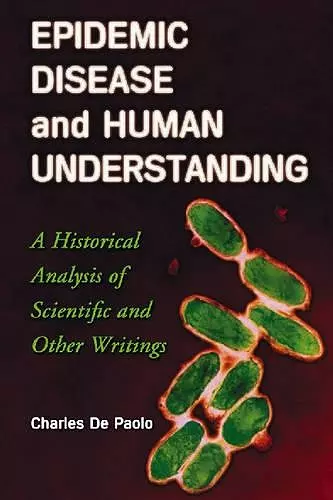Epidemic Disease and Human Understanding
A Historical Analysis of Scientific and Other Writings
Format:Paperback
Publisher:McFarland & Co Inc
Published:3rd Mar '06
Currently unavailable, and unfortunately no date known when it will be back

For more than three thousand years of recorded history, human beings have been struggling to understand the epidemic - the rapid spread of a contagious disease throughout a human population. This book draws on an extensive list of primary texts to present a comprehensive history of epidemiological thought over the last three millennia. The book is primarily concerned with the human experience of epidemic disease and the various means through which this experience has been conceptualized and communicated. The discussion begins with the writers of antiquity, and Part I examines the religious, mythological and philosophical paradigms that ancient peoples used to comprehend and interpret epidemic disease. This dogmatic approach to the nature of disease is traced from Greco-Roman times to the present. Gradually, many people came to interpret the epidemic experience as a natural phenomenon rather than an instrument of divine purpose. The important transition from an emphasis on received doctrine to one on direct experience is the focus of Part II. Famous historical documents, such as Thucydides description of the plague of Athens in 430 B.C.E and Giovanni Boccaccio's description of the Black Death in The Decameron, are used to illuminate this transition. The systematic examination of biomedical phenomena that began in the seventeenth century and has developed into the complex field of modern medicine is the focus of Part III. Finally, Part IV considers the ways in which epidemic disease has been treated in various works of literature. The discussion includes factual eyewitness accounts as well as such popular works of fiction as Sinclair Lewis' Arrowsmith and Albert Camus' The Plague. In surveying human responses to endemic disease, the book relates three sub-genres of epidemiological writing to one another: the encyclopedia, the intellectual history, and the biographical collection. In all, this work covers one dozen illnesses, more than thirty select authors, and nearly fifty primary works.
“thoroughly and extensively referenced”—The Times Literary Supplement.
ISBN: 9780786425068
Dimensions: unknown
Weight: 377g
268 pages